In the traditional work methods the common perception of the leader is that he or she should be the one who knows the best, this is taking form by the leader either being the one taking decisions single-handedly or by being the one who sums up the group discussion and determines what should be done. It is common that people, characterised by this work method, prepare a convincing argument, which leads to their own suggestions becoming the solution.
The communication, or the interaction, normally happens during a meeting where the solution is to be worked through or presented.
One way of describing the thought process of leaders in the authoritarian school, is as follows: the leader makes clear that suggestion 1 should be implemented. After it has been implemented suggestion 2 is described, and so on. The team and its members are presented with each step of implementation, without having any real understanding of why or where it will lead.

If the leader uses the management by objectives style, the meeting will be somewhat different. The leader’s task is to prepare an explanation that will lead to an excess of suggested activities.
The leader clarifies the results that are imperative, and thereafter puts forward suggestions 1,2,3…, that are the most important to implement. If the leader has a modern style, there will be a follow-up in the form of a rhetorical question about if anyone has anything to add or object to. Usually no one ever does.

The solution-oriented leaders do the opposite. First the team will be questioned about what they believe to be the most important thing to make happen.
Maybe not individually, but jointly, they will put forward 1, 2, and 3. As they have presented their viewpoints, they are open, and curious about additional possibilities to solve the issue. If the leader adds a solution 4 and 5, this will be appreciated as a type of support or added value. Sometimes this general view may help someone in the team to see something in our image – suggestion 6, something that perhaps not even the leader was able to see from the start.

This simple formula is enough to understand the core of a solution-oriented leadership style. First involve your co-workers in answering the most important questions themselves, and then it becomes clear what they do not see. In these gaps you can provide input in order to increase quality. By consistently working with this method, the leaders help themselves to realise how extremely powerful a well-functioning team is.
The collective intelligence that exists in all teams can, with the help of this formula, and the COD methodology, become a driving force behind all the efforts to find the solutions. If the leader, and every other participant, takes on board the team’s suggestions without discussion, both leaders and teams can see the common solution. If some important input is missing, the leader can provide it when the team is ready. However, experience tells us that it will not always be necessary.
